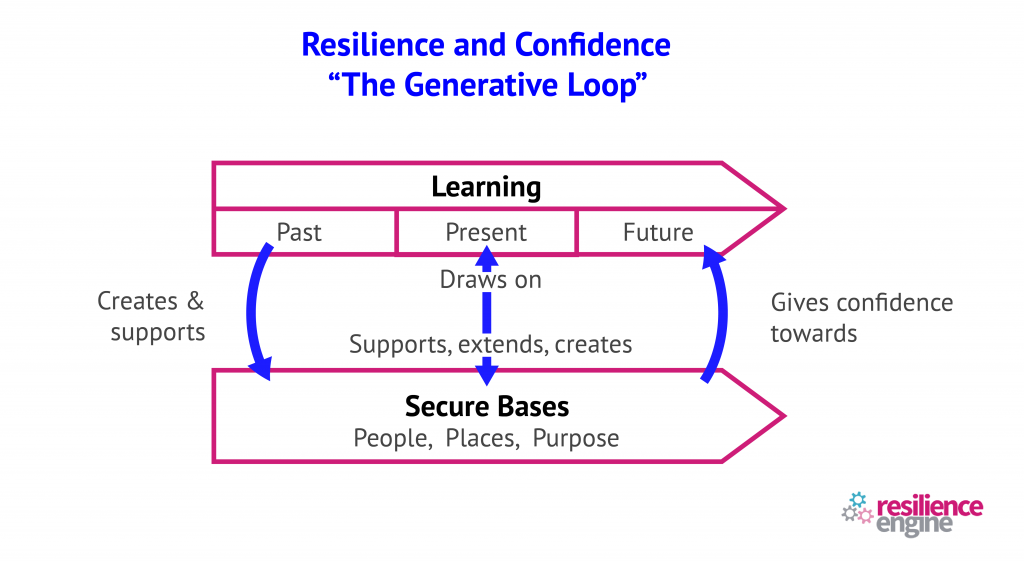Encouraging self efficacy in the workplace

Busting The Myths of Resilience Series
Myth 3: Confidence is needed for resilience
Encouraging self efficacy in the workplace
Part 2: Confidence and resilience. Self efficacy
In the previous publication, you saw that a resilient way of living and working includes nourishing secure bases. Secure bases drive a deep level of confidence in feeling both safe and inspired to be everything you can be. Secure bases provide the bedrock for being able to innovate and experiment, encouraging both security and growth at the same time. An amazing combination.
They also provide the gateway to enabling voice, diversity and inclusion in the workplace, collaboration, good leadership as well as innovation and change. One part of creating a resilient culture then is to foster secure based leadership. (Reference George Kohlrieser, Care To Dare).
The other type of confidence that is of critical importance within organisations is the knowledge that you can execute a task or deliver on a particular project or get through the challenges ahead. It’s going further than secure bases, but activating these together with a set of skills and attitudes. It’s all the skills of resilience, such as combining both independence and dependence, or fostering both pragmatism and optimism and being able to choose which you draw on in any situation or moment.
This layering up from secure bases gives rise to self-efficacy, which is itself an outcome of resilience.

Alfred Bandura, the originator of the theoretical construct of self-efficacy, describes those with ‘self-efficacy as people with high assurance in their capabilities who approach difficult tasks as challenges to be mastered rather than as threats to be avoided.’ 1
He also says that the most effective way of creating a strong sense of efficacy is through what he describes as ‘mastery’ experiences. It means shooting for targets that are stretching and achievable.
Another element is that mastery must be modelled by others, especially leadership. And those modelling must be perceived as similar to those they lead; the distant can’t be too far otherwise the leaders create a ‘them and us’ situation. Again part of resilience is being able to fully embrace your own power, whilst remaining humble.
To even think about creating the conditions for ‘mastery’ can be daunting for some. For those leaders who are exhausting themselves through overcommitting or doing something they don’t find energising, what room is there for feeling masterful about anything?
It all demands proactive investment in resilience. Building resilience across an organisation can be a very pragmatic process but it does take quality thinking and quality time. This is part of The Resilience Way, exemplified in the book The Resilience Dynamic®.
If you would like to know more about how The Resilience Engine is helping organisations build a resilience culture, please get in touch.
References: Hughes, R., Kinder, A. & Cooper, C. L. The Wellbeing Workout. (2018). doi:10.1007/978-3-319-92552-3
